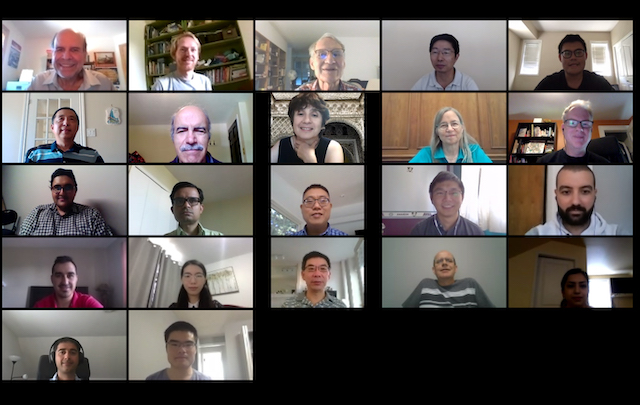Canadian Queueing Theorists and Practitioners Conference (Online) (20w2253)
Organizers
Javad Tavakoli (University of British Columbia, Okanagan)
Yiqiang Zhao (Carleton University)
Description
The Banff International Research Station will host the "Canadian Queueing Theorists and Practitioners Conference" online workshop at BIRS from August 21, 2020 to August 22, 2020.
Queueing theory is concerned with developing and investigating mathematical models of systems where “customers” wait for “service.” The terms “customers” and “servers” are generic. Customers could, for example, be humans waiting in a physical line or waiting on hold on the telephone, jobs waiting to be processed in a factory, or tasks waiting for processing in a computer or communication system.
The CanQueue annual conference started from a workshop, organized by Prof. Alfa, at the University of Manitoba in 1999. Since then, twenty (20) CanQueue conferences have been held in Canada, including CanQueue 2002 at U of S; 2004 at UBC Okanagan, 2006 and 2011 at Banff, both sponsored by BIRS. It was a decision at the CanQueue2019, at Fields Institute in Toronto in August 2019 that CanQueue 2020 will be organized by us and held at Banff (based on the feedback from Canadian queueing community people).
Queueing theory started with the work of Danish mathematician A. K. Erlang in 1905, which was motivated by the problem of designing telephone exchanges. The field has grown to include the application of a variety of mathematical methods to the study of waiting lines in many different contexts. The mathematical methods include Markov processes, linear algebra, transform theory, and asymptotic methods, to name a few. The areas of application include computer and communication systems, manufacturing systems, and health care systems. Many recent developments in queueing theory have been driven in large part by a greater interest in applications that involve human customers, for example in the rapidly growing call centre sector. Humans behave in less predictable ways than, say, jobs in a factory or tasks in a computer system. For example, they may renege (abandon the queue), and retry later. The needs of human customers are likely to be heterogeneous (motivating the use of skills-based routing to connect different customers to different servers) and to vary with time (sometimes requiring transient rather than steady-state solutions).
All of these complications lead to interesting mathematical challenges. The interest in modeling reneging has led to a substantial literature by now, for example. Asymptotic analysis, which in the past typically considered situations where the arrival rate approached the capacity of a system with fixed number of servers, has been rejuvenated by a focus on situations where the arrival rate and the number of servers approach infinity simultaneously. Such many-server asymptotic analysis has resulted in a collection of simple-to-use formulas for recommended staffing, consisting of a linear term (minimum staffing for stability) and a square root term (“safety staffing,” to protect against random fluctuations). In addition to the focus on the call centre sector, applications in health care are becoming increasingly important.
Join the conference - Potential participants should send an email to Ehssan Ghashim at: EhssanGhashim@cmail.carleton.ca to express their interest of participation. The workshop organizers will send out the Zoom meeting links at a later date.
The organizers can be reached at "Javad Tavakoli" <javad.tavakoli@ubc.ca>, "Yiqiang Zhao" <yiqiangzhao@cunet.carleton.ca>.
The Banff International Research Station for Mathematical Innovation and Discovery (BIRS) is a collaborative Canada-US-Mexico venture that provides an environment for creative interaction as well as the exchange of ideas, knowledge, and methods within the Mathematical Sciences, with related disciplines and with industry. The research station is located at The Banff Centre in Alberta and is supported by Canada's Natural Science and Engineering Research Council (NSERC), the U.S. National Science Foundation (NSF), Alberta's Advanced Education and Technology, and Mexico's Consejo Nacional de Ciencia y Tecnología (CONACYT).






